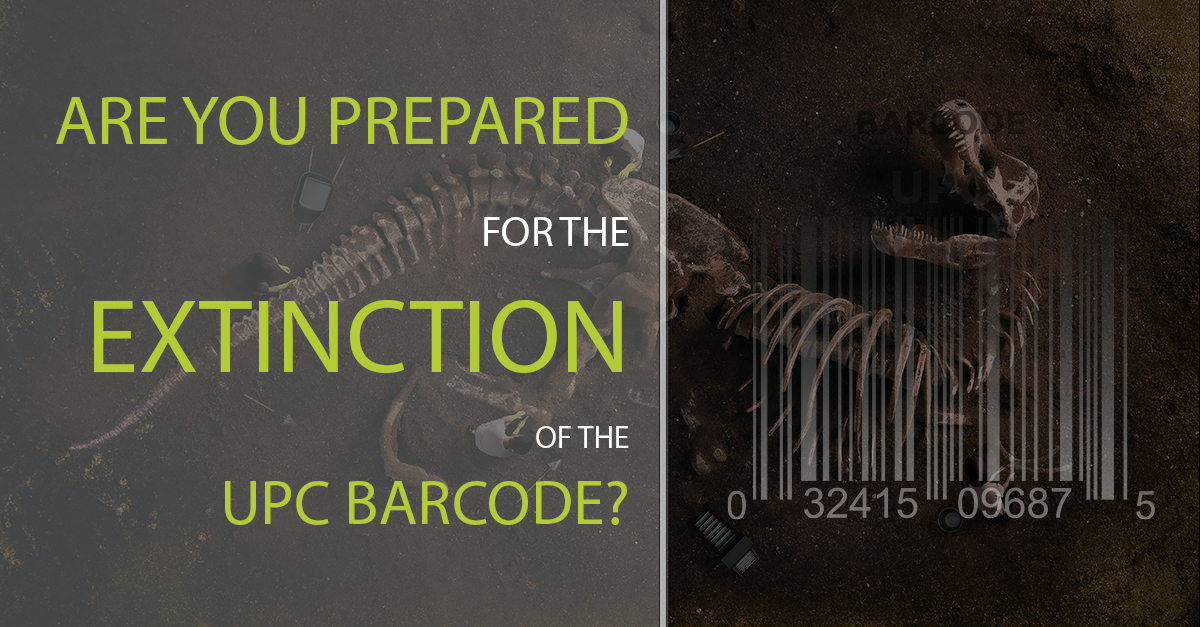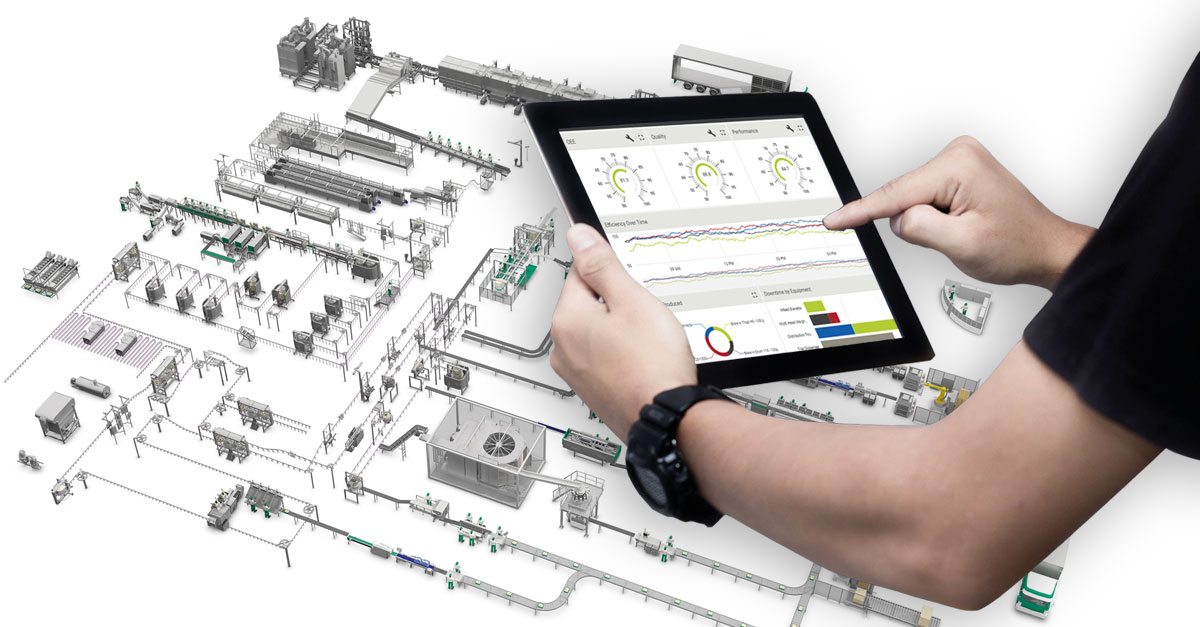By 2027, retailers must be able to scan a 2D barcode to retrieve the GTIN-12 (UPC) data string in addition to the linear, 1D EAN/UPC barcode that is commonly used today for pricing information at checkout. This does not mean the linear UPC barcode will go away entirely, but product suppliers will be able to choose between using a 2D barcode or both barcodes on their POS items.
The rollout of the 2D barcode requirement is supported through Sunrise 2027, a new initiative from GS1 US – a neutral, not-for-profit organization that develops internationally recognizable supply chain standards.
Why Sunrise 2027?
A primary driver for GS1 creating this initiative is to solve the industry need to provide more data on-pack than simply the GTIN – by supporting the widespread adoption of a data-rich carrier. QR Codes and Data Matrices can encode multitudes more information than 1D barcodes using less real estate on the package. In the supporting research for Sunrise 2027, GS1 and industry partners highlighted the following key areas as a priority for improvement across the food industry: inventory accuracy, improved consumer engagement, product authenticity, freshness/waste prevention, and traceability. This initiative was not constructed to simply change the format of barcodes accepted for POS items but was grown out of a need to improve data communication across the supply chain through a gradual change – starting with the consumer level.
Given these new capabilities, retailers may request more dynamic, item-specific attribute information to be encoded on these 2D barcodes, such as lot number, serial number, pack date, expiration date, etc. For example, inventory accuracy was cited as the most frequent driver for adopting a data-rich carrier [2D barcode] for the 2027 Sunrise Initiative, and this granular level of inventory management may require a serial number to be encoded in the 2D barcode for POS items. In such cases, this may require a more rigorous change in packaging and labeling for product suppliers.
How will Sunrise 2027 impact meat and poultry processors?
The following example illustrates a common scenario in product packaging: A major poultry processor uses the same packaging film for its bags of frozen chicken nuggets sold at major retail chains. This flexible packaging material is used across three plants that produce the same variety of chicken nuggets, and the film is pre-printed with the same label art and includes a static 1D, linear UPC barcode that serves as the item lookup number for retailers. To comply with the GS1 Sunrise 2027 Initiative, the poultry company changes its film to also include a data matrix barcode encoding the same GTIN-12/UPC barcode in addition to the linear, 1D UPC barcode – overall a minor change in packaging workflow.
However, to fully leverage the capability of this new data-rich carrier, a major retailer begins requesting lot numbers and pack dates to be included with the data matrix as a cost-saving strategy for better waste prevention and recall preparedness. This request would require major packaging changes for the chicken nuggets supplier, as the static, pre-printed barcode information would no longer be adequate. The usefulness of pre-printing 2D barcodes on the packaging would be eliminated because this attribute, dynamic information would have to be encoded in the barcode at the time of production and applied on-pack.
How do CAT Squared’s solutions support GS1’s Sunrise 2027 labeling requirements?
In a scenario where dynamic information is required to be encoded on POS items, CAT Squared is poised to offer some solutions. As customers may be aware, CAT Squared recommends the barcode design software BarTender® by Seagull Scientific to design labels and create barcodes, which will be exported into printer-language (.prn) files and then be applied to product codes in CAT2 Product Master. BarTender® easily supports the creation of 2D barcodes that encodes multiple dynamic data fields by pulling that data from the CAT2 databases. However, many customers only utilize BarTender® and CAT Squared Case Labeling/Scale modules for printing labels at the time of pack for case-level items (a logistical unit that contains multiple units of a POS item).
These customers should consider that the CAT2 Scale.exe application also has a function for weigh-price labeling and N+1 labeling that enables users to weigh individual consumer units, print labels for each of those, and then automatically print a case label once the units/case value is reached at the scale. Utilizing the WPL screen of Scale.exe and N+1 labeling functionality, customers can print labels with 2D barcodes that encode dynamic information such as pack date, expiration date, lot number, etc. for each consumer unit and then print a case label all at the same scale station – although two different printers will likely be required because of the label dimension differences between case labels and consumer unit labels.
What can processors and suppliers do to prepare for Sunrise 2027?
The implementation timeline for this initiative is still several years away, and time has yet to tell if retailers would even request such dynamic information in the 2D barcode. Most food suppliers are already required to encode a lot number and some form of an expiration date on their individual POS packages – typically applied with code dating machines at pack. Additionally, the on-pack level attribute information that could be encoded in the 2D barcode is grouped into “advanced use cases” for the Sunrise 2027 Initiative and suggests that these scenarios are to be assessed “at a later date as cases are evaluated and systems are upgraded.”
This underscores why collaboration between product suppliers, brand owners, and retailers will be crucial moving forward. Some retail trading partners may not have the scanning hardware and software to interpret the multiple data points in a 2D barcode at checkout. Additionally, suppliers need to communicate with retailers regarding future data requirements and potential pilot studies to ensure a smooth transition. Depending on requests from retailers, brand owners may need to re-evaluate their existing packaging, barcode printing methodologies, and the software used to encode that data into barcodes.
To learn more about this GS1 U.S. Sunrise 2027 Initiative and other GS1 labeling standards, consider attending the CAT Squared User Summit. More specific information from GS1 U.S. on the Sunrise 2027 Initiative can be found here as well.






